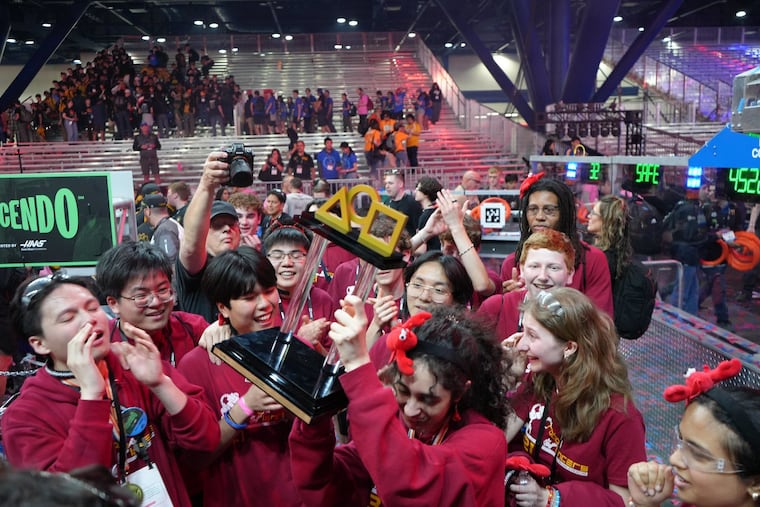Central High’s robotics team is now a world champion, having bested better-funded teams with ‘strategy and brains’
Other teams were wracked with nerves, but Central’s team walked around with lobster hats, a nod to Leonardo DaPinchi, their lobster-themed robot. (The RoboLancers call him Leo for short.)
